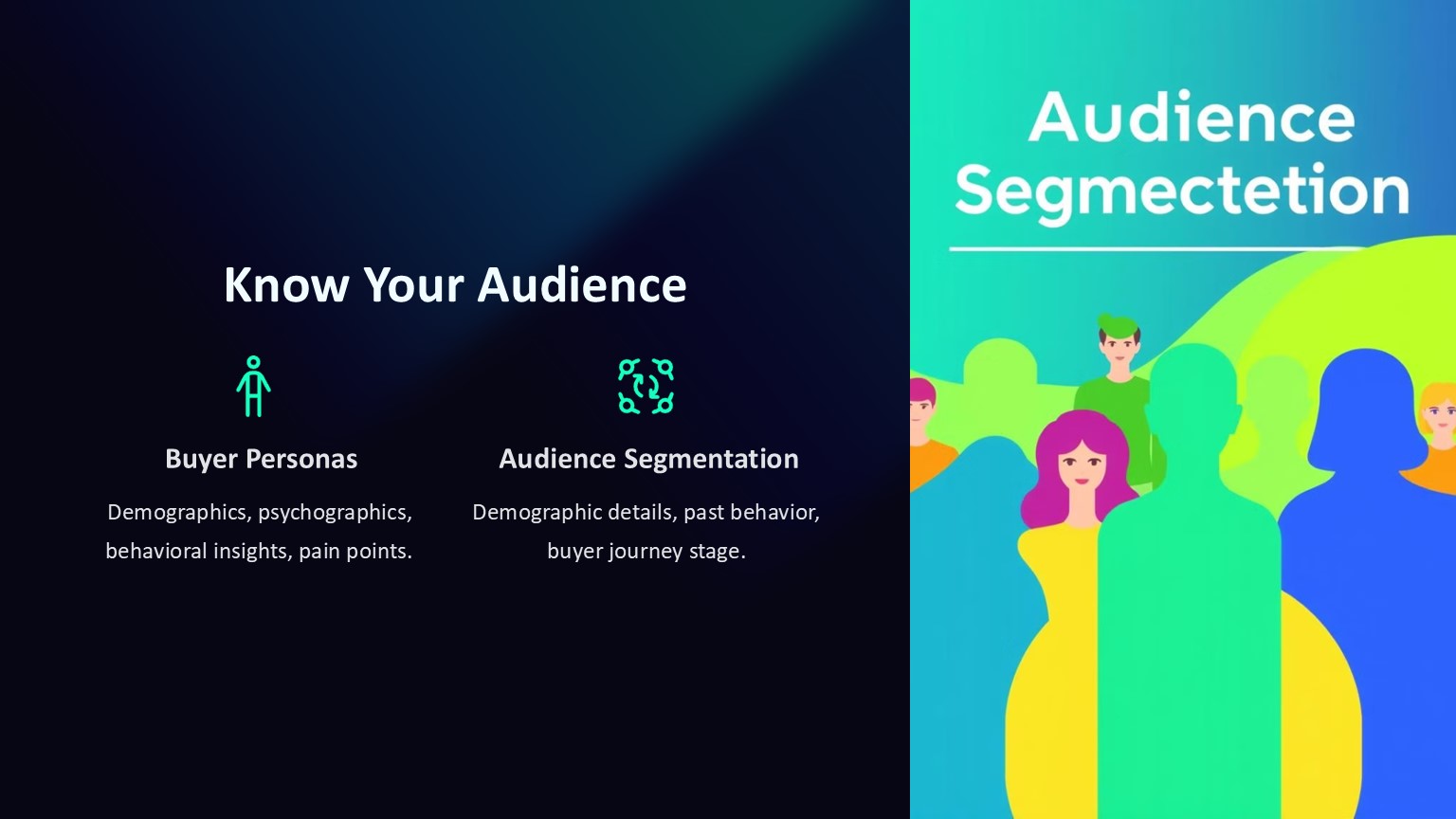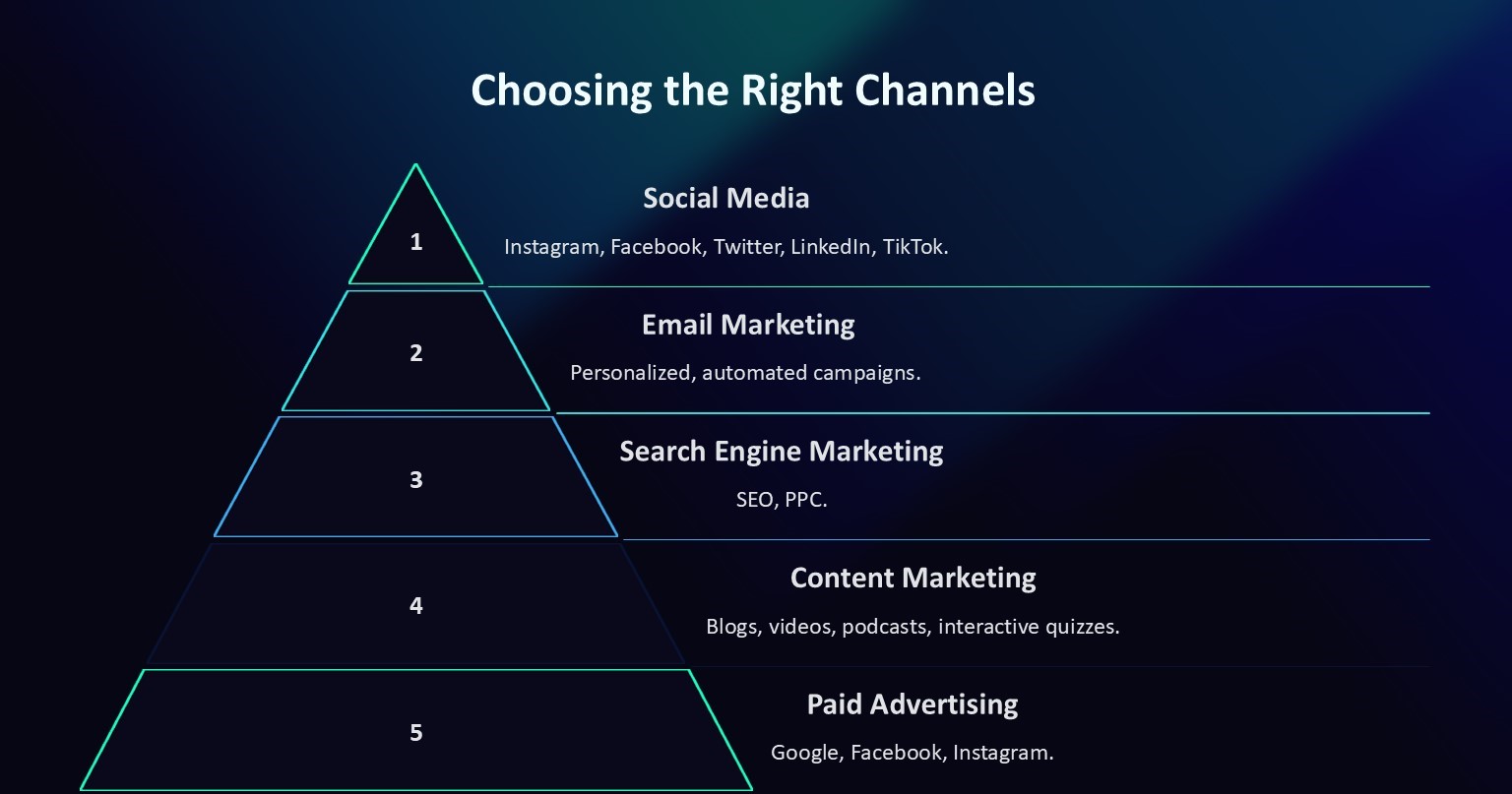In the ever-evolving world of digital marketing, staying ahead of the curve is essential. 2024 is no exception, as new trends, technologies, and consumer behaviors are reshaping the landscape. Whether you’re managing a brand’s online presence, working as a marketing consultant, or running a startup, knowing how to create effective marketing campaigns in 2024 can make the difference between success and failure.
This guide will walk you through the most important strategies, tools, and practices for building highly effective digital marketing campaigns. From crafting the perfect message to understanding the latest digital marketing trends, we’ll cover everything you need to know to elevate your marketing game in 2024.
1. Understanding the Digital Marketing Landscape in 2024

To build an effective campaign, you first need to understand the environment you’re working in. In 2024, digital marketing is more data-driven, personalized, and technologically advanced than ever before. Several key factors have defined this shift:
A. AI and Automation
Artificial Intelligence (AI) is no longer a futuristic concept — it’s part of everyday digital marketing. Tools powered by AI help marketers analyze data, predict customer behavior, personalize content, and automate repetitive tasks like email sequences and social media posts.
For example, AI-driven tools such as chatbots, content generators, and predictive analytics are becoming indispensable. With the ability to analyze vast amounts of data, AI provides insights into customer preferences, helping you craft targeted campaigns that deliver results.
B. The Rise of Video and Interactive Content
Video content continues to dominate, especially on platforms like YouTube, Instagram, TikTok, and LinkedIn. However, in 2024, interactive video and augmented reality (AR) experiences are taking engagement to the next level. Interactive ads and videos where users can make choices or explore different storylines are gaining traction.
Additionally, shoppable videos — where users can purchase directly through the video — are becoming more common. As a result, marketers must integrate video in creative ways to boost engagement and conversions.
C. Data Privacy and Compliance
As data privacy laws continue to evolve globally (e.g., GDPR in Europe, CCPA in California), marketers must be vigilant about compliance. In 2024, consumer trust is paramount, and campaigns that use data responsibly and transparently will gain the most traction. It’s critical to ensure that your campaigns are compliant with regulations and respect users’ privacy preferences.
D. Voice Search and Smart Devices
With the increased use of voice assistants (Alexa, Google Assistant, Siri), optimizing for voice search is essential. Marketers are now focusing on conversational content and SEO strategies tailored to how people speak rather than type. Optimizing your campaigns for voice search can improve your discoverability and engagement.
2. Defining Your Campaign Goals

A successful campaign begins with clearly defined goals. Without a roadmap, even the best strategies and tactics can fall short. In 2024, the focus is on more specific and measurable goals that tie directly to business outcomes.
A. SMART Goals
The SMART framework — Specific, Measurable, Achievable, Relevant, and Time-bound — remains one of the most effective ways to set campaign objectives. Whether you’re aiming to increase brand awareness, drive traffic, or boost sales, make sure your goals are concrete and aligned with your overall business strategy.
Example:
- Specific: Increase website traffic from social media by 30%.
- Measurable: Track traffic using Google Analytics.
- Achievable: Based on previous performance, this increase is realistic.
- Relevant: More traffic aligns with the goal of increasing product awareness.
- Time-bound: Achieve this within the next 3 months.
B. KPIs and Metrics
In 2024, data is everything. You’ll need to choose key performance indicators (KPIs) that measure the success of your campaign. KPIs could include:
- Conversion rates
- Cost per acquisition (CPA)
- Return on investment (ROI)
- Engagement rate (likes, shares, comments)
- Click-through rate (CTR)
Tracking these metrics will allow you to refine your strategy as the campaign progresses, ensuring maximum effectiveness.
3. Know Your Audience: The Key to Personalization

The importance of knowing your audience cannot be overstated. In 2024, personalized marketing is no longer optional — it’s a necessity. Consumers expect tailored experiences, and brands that fail to deliver personalized content risk falling behind.
A. Create Buyer Personas
Buyer personas are detailed profiles of your ideal customers, based on research and data. In 2024, these personas need to be as nuanced as possible. Instead of generic categories, think about:
- Demographics: Age, gender, income, location
- Psychographics: Values, interests, lifestyles, motivations
- Behavioral Insights: Purchase habits, online activity, browsing history
- Pain Points: What problems does your product solve for them?
Using tools like Google Analytics, social media insights, and surveys, you can gather a wealth of data to create highly accurate and effective buyer personas.
B. Segment Your Audience
Once you have a solid understanding of your target audience, it’s time to segment them into different groups based on characteristics or behaviors. Segmentation allows you to deliver the right message to the right people, increasing the chances of conversion.
For example, you can create segments based on:
- Demographic details (age, income, location)
- Past behavior (previous purchases, interaction with your content)
- Stage in the buyer journey (awareness, consideration, decision)
4. Crafting the Perfect Message

Your message is the heart of any marketing campaign. A great message resonates with your audience and speaks directly to their needs, desires, and pain points. In 2024, consumers are more discerning and expect authenticity in messaging.
A. Focus on Benefits, Not Features
People don’t buy products; they buy solutions. While it’s important to highlight the features of your product or service, focusing on the benefits will help you connect emotionally with your audience. For example, instead of saying, “Our software has 20+ features,” say, “Our software saves you 10 hours per week by automating tedious tasks.”
B. Tell a Story
Storytelling is an incredibly powerful tool in digital marketing. A good story humanizes your brand and helps consumers connect with it on a deeper level. Whether it’s the story of your company’s origin or a customer success story, storytelling makes your message memorable.
C. Use Emotional Triggers
Emotions drive decisions. In 2024, successful campaigns often tap into emotions like:
- Fear of missing out (FOMO)
- Joy of solving a problem
- Curiosity about new trends
- Pride in owning something exclusive
Understanding the emotional triggers of your audience can help you craft more persuasive and impactful messages.
5. Choosing the Right Channels

The digital world is vast, and there are countless channels available to market your product. However, not all channels will be effective for your campaign. It’s essential to choose the ones that align with your goals and where your target audience is most active.
A. Social Media
Social media continues to be a dominant force in 2024. Platforms like Instagram, Facebook, Twitter, LinkedIn, and TikTok offer various opportunities for marketers to engage with consumers. To create effective campaigns, focus on:
- Platform-specific content: Tailor your content for each platform (e.g., videos for TikTok, infographics for LinkedIn).
- Paid advertising: Ads on social media can significantly boost your reach. Use targeting options to ensure your ads reach the right audience.
- Influencer partnerships: Collaborating with influencers helps increase brand visibility and credibility.
B. Email Marketing
Email remains one of the most cost-effective channels for driving conversions. In 2024, email campaigns are becoming more personalized and automated. By segmenting your email list and sending targeted messages based on user behavior, you can improve open rates and engagement.
C. Search Engine Marketing (SEM)
Both organic search (SEO) and paid search (PPC) are vital in 2024. With more consumers searching online for products and services, ranking high in search results is critical. Combine high-quality content with SEO strategies to ensure your brand is discoverable. Paid search campaigns can also help you target specific keywords and reach users who are actively searching for solutions.
D. Content Marketing
Content is still king, especially when it comes to building trust and authority in your niche. In 2024, content marketing involves creating educational, informative, and engaging content that addresses your audience’s needs. Think blogs, videos, podcasts, and interactive quizzes.
E. Paid Advertising
Paid ads on platforms like Google, Facebook, and Instagram can drive quick traffic to your website. However, it’s crucial to monitor ad performance and optimize your campaigns regularly to ensure you get the best ROI.
6. Optimizing Your Campaign

In 2024, running a campaign isn’t a set-it-and-forget-it process. You need to continuously monitor its performance, adjust your tactics, and optimize based on data.
A. A/B Testing
A/B testing (split testing) allows you to compare two versions of a campaign to see which one performs better. This can be applied to everything from email subject lines to landing page layouts. A/B testing helps you understand what resonates with your audience and refine your strategies.
B. Analytics and Tracking
Use tools like Google Analytics, HubSpot, and social media insights to track key metrics and measure your campaign’s success. Monitoring metrics like conversion rates, engagement, and traffic helps you make data-driven decisions that improve your campaign’s performance.
C. Iterate Based on Feedback
Always gather feedback from your audience and learn from it. Social media comments, customer reviews, and direct surveys can provide valuable insights that help you fine-tune your campaign.
Conclusion
The digital marketing world is constantly changing, and 2024 is no different. By understanding the latest trends, focusing on personalization, choosing the right channels, and optimizing continuously, you can create campaigns that not only capture attention but also drive meaningful results.
Remember, successful campaigns are built on a deep understanding of your audience, a compelling message, and the agility to adapt to changes. Stay informed, experiment with new techniques, and always keep the customer at the center of your strategy. With the right approach, 2024 can be your most successful year yet in digital marketing.
Frequently Asked Questions
1. What are the most important trends to consider when creating a marketing campaign in 2024?
In 2024, several key trends are shaping marketing campaigns. These include the rise of AI and automation for personalization and customer insights, the continued dominance of video content (especially interactive and shoppable videos), increased data privacy concerns, and the integration of voice search optimization. It’s also crucial to stay updated on evolving social media algorithms and focus on building trust with transparent communication.
2. How can I personalize my marketing campaigns effectively?
Effective personalization starts with understanding your audience deeply. Segment your audience into smaller groups based on demographics, behavior, and preferences. Use tools like AI-driven analytics to deliver tailored content, offers, and recommendations. Implement dynamic email marketing campaigns, personalized website experiences, and targeted ads to make each touchpoint unique for the individual user.
3. How do I define success for my digital marketing campaigns?
Defining success depends on the goals of your campaign. For brand awareness, success may be measured by social media reach, engagement, and impressions. For lead generation or sales, focus on KPIs like conversion rates, click-through rates (CTR), and cost per acquisition (CPA). Always set clear, measurable goals (SMART goals) and track relevant metrics throughout the campaign to ensure you’re on the right track.
4. Is AI really essential in digital marketing campaigns in 2024?
Absolutely! AI is transforming digital marketing by offering deeper insights into customer behavior, automating repetitive tasks, and personalizing content at scale. AI-driven tools help marketers segment audiences, create optimized content, predict trends, and improve customer engagement. Whether it’s using AI for chatbots, content generation, or predictive analytics, it plays a critical role in enhancing campaign effectiveness.

